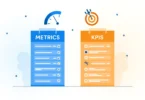Introduction: Stop Procrastinating and Start Living Your Potential
We all know that feeling: the looming pressure of a deadline, the endless list of tasks, and yet… we just can’t seem to get started. Procrastination is a powerful force that creeps into our daily lives, holding us back from reaching our goals and living up to our full potential. Whether it’s avoiding an important work project, putting off exercise, or delaying a personal goal, procrastination sabotages productivity and keeps us stuck in a cycle of inactivity and stress.
But here’s the good news: procrastination doesn’t have to be a permanent part of your life. The key to breaking free is understanding why we procrastinate and learning effective strategies to combat it. In this post, we’ll dive into the science of stopping procrastination, exploring its effects on our lives, and sharing actionable game-changing habits that will help you stop procrastinating for good. Ready to take control of your time and start making meaningful progress? Let’s dive in!
Table of contents
Understanding the Root of Procrastination
- What Really Causes Procrastination?
- How Procrastination Affects Your Life
- The Science Behind Delayed Action
6 Game-Changing Habits to Stop Procrastinating for Good
Tools and Mindset Shifts That Stop Procrastinating
- Leverage To-Do List Apps
- Rewire Your Thoughts with CBT Techniques
- Embrace Progress Over Perfection: To stop procrastinating
Understanding the Root of Procrastination
To truly stop procrastinating, it’s crucial to understand why we delay tasks in the first place. Procrastination isn’t just about laziness; it’s often tied to deeper emotional and psychological factors like fear, perfectionism, and lack of clarity. By identifying the root causes of your procrastination, you can address the underlying issues and begin taking meaningful steps toward overcoming delays, building momentum, and achieving your goals. Let’s explore what drives procrastination and how you can break free from it.
What Really Causes Procrastination?
Procrastination isn’t just laziness—it’s often a psychological defense mechanism. At its core, procrastination is the brain’s way of protecting us from discomfort. That discomfort might come from fear of failure, perfectionism, or even lack of clarity about what we’re supposed to do next.
Let’s break it down:
- Fear of Failure: You might avoid starting a task because deep down, you’re afraid you’ll mess it up. It’s safer (in your mind) to delay than to risk doing it “wrong.” The problem? This fear keeps you stuck in a cycle of self-doubt and inaction.
- Perfectionism: The drive to get everything just right can actually paralyze you. If you believe your work has to be flawless, starting becomes terrifying. So instead, you wait. And wait. And nothing gets done.
- Lack of Clarity: When you’re unsure of the steps to take, or the end goal is fuzzy, procrastination can sneak in. Your brain defaults to easier, more familiar activities because the task ahead feels overwhelming or vague.
All of these causes are intensified by something known as the dopamine cycle. Dopamine is the brain’s “feel-good” chemical—it spikes when we do things that bring quick pleasure. So instead of working on that long report, your brain nudges you toward scrolling social media, watching a funny video, or checking your inbox again. These actions give you instant gratification, unlike the delayed reward of completing a meaningful (but challenging) task.
In short, procrastination isn’t just a bad habit. It’s a tricky combination of emotional avoidance and your brain’s craving for quick hits of dopamine. Understanding this gives you power—because once you name the problem, you can start to change it.
How Procrastination Affects Your Life
Procrastination doesn’t just steal your time—it quietly chips away at your potential, your peace of mind, and your self-worth. The consequences can feel small in the moment, but they add up in powerful ways over time.
Let’s take a look at how this sneaky habit impacts different parts of your life:
- Your Productivity Takes a Hit
When you keep putting things off, tasks pile up, deadlines get tighter, and the quality of your work suffers. What could’ve been done calmly in one hour turns into a stressful all-nighter. Procrastination turns simple tasks into mountains, which only fuels more delay. - You Feel Stressed and Overwhelmed
Each time you delay a task, it doesn’t disappear—it lingers in the back of your mind like mental clutter. This creates a constant low-level anxiety that can spiral into full-blown stress. You may find yourself always “busy,” but not truly productive, stuck in a loop of guilt and avoidance. - It Erodes Self-Trust and Confidence
Every time you break a promise to yourself—“I’ll start tomorrow” or “Just five more minutes”—your self-trust takes a hit. Over time, this leads to feelings of inadequacy and frustration. You may begin to doubt your ability to follow through, which keeps you in a cycle of low motivation. - Opportunities Slip Away
Whether it’s applying for a job, launching a project, or reaching out to someone important—delaying action can cost you real opportunities. Procrastination keeps you playing small while time moves forward without waiting.
In short, procrastination creates a domino effect. It doesn’t just delay your to-do list—it disrupts your momentum, clouds your mental clarity, and keeps you from reaching your full potential. The good news? You can break the cycle with awareness and the right habits.
The Science Behind Delayed Action
Why do we delay tasks even when we know they’re important? The answer lies in how our brain processes discomfort, decision-making, and reward. Procrastination isn’t just a bad habit—it’s deeply rooted in how we’re wired to avoid pain and seek pleasure.
Let’s break this down:
- Your Brain’s Natural Resistance to Pain
The human brain is designed to keep us safe, not necessarily productive. When faced with a challenging or unclear task, your brain interprets it as a threat to your emotional comfort. Even the idea of failure, criticism, or uncertainty can trigger your brain to hit the brakes. Instead of moving forward, you shift toward easier tasks that bring quick relief—like checking your phone or watching videos. This is known as emotional avoidance, a key concept explored in Cognitive Behavioral Therapy (CBT). - The Role of the Amygdala and Prefrontal Cortex
Your amygdala, the brain’s emotional alarm system, sounds off when it senses discomfort or stress. Meanwhile, your prefrontal cortex—the part responsible for planning and logic—wants you to get the task done. In procrastinators, this emotional center often overrides the logical one, leading to what scientists call cognitive dissonance—a tug-of-war between knowing what you should do and what feels easier right now. - The Mental Block That Feeds the Cycle
Once you’ve put off a task, the guilt kicks in. That guilt can then feed into negative self-talk like “I always mess this up” or “What’s the point?” These thought patterns create mental blocks, making the task feel even heavier the next time you face it. That’s why procrastination is often a self-reinforcing cycle—it grows each time you give in to it. - Instant Gratification vs. Delayed Rewards
Here’s where dopamine sneaks back into the picture. Your brain loves instant rewards, and hard work usually offers delayed ones. So when you choose a quick dopamine hit—like social media or snacks—over a long-term goal, your brain says, “Great choice!” This reward loop reinforces procrastination, making it harder to break the cycle.
Understanding the science behind delayed action isn’t about blaming your brain—it’s about outsmarting it. Once you see what’s happening under the surface, you can apply strategies (like CBT techniques or structured habit changes) to train your mind to respond differently.
6 Game-Changing Habits to Stop Procrastinating for Good
This section dives into practical, science-backed habits that help you break free from the procrastination loop and build real momentum. These habits aren’t just trendy—they’re built on psychology, behavior change, and simple daily systems that anyone can use.
1. Use the 5-Second Rule
Have you ever had a great idea or intention—then watched it vanish as you talked yourself out of it? Enter the 5-Second Rule, popularized by Mel Robbins. The concept is simple but powerful:
When you feel the urge to act on a goal, count down 5-4-3-2-1, and physically move or start doing the task before your brain can sabotage you.
Why it works?
Your brain tries to avoid discomfort, even if it’s for your own good. But by acting fast—within that five-second window—you bypass overthinking, reduce hesitation, and activate your prefrontal cortex, the decision-making center. It’s a small trick that builds momentum fast.
2. Apply the Pomodoro Technique
The Pomodoro Technique is a time management system that turns work into short, focused sprints. You work for 25 minutes, then take a 5-minute break. After four rounds, you take a longer break.
Why this helps procrastinators:
- It lowers the mental barrier of “having to work for hours”
- It gives your brain consistent dopamine hits for progress
- It creates urgency and structure, which reduces distractions
Just one Pomodoro round can turn a dreaded task into a completed chunk—and that win can pull you out of a slump.
Recommended: The Best Time Management Strategies for Busy Professionals
3. Stack New Habits With Existing Ones
One of the easiest ways to build new behaviors is through habit stacking, a concept from James Clear’s book Atomic Habits. The idea? Attach a new habit to something you already do.
For example:
- After brushing your teeth in the morning, sit for 5 minutes and plan your top 3 tasks.
- Right after lunch, write 3 sentences for your ongoing project.
This works because your brain already recognizes the first habit, so you’re piggybacking on its momentum to build a new one.
4. Time Block Your Day
Time blocking means assigning specific tasks to specific hours of your day, like appointments with yourself. You can use tools like Google Calendar, Notion, or even a notebook.
How it fights procrastination:
- It removes ambiguity (“When should I start?” becomes “Right now”)
- It gives structure to your energy and focus
- It reduces decision fatigue, so you’re less likely to default to scrolling or stalling
Start small. Block just two hours a day to work on meaningful tasks—and protect that time like a real meeting.
5. Prioritize with the Eisenhower Matrix
This simple yet powerful decision tool helps you sort your tasks by urgency and importance. It has four boxes:
- Do it now (urgent and important)
- Schedule it (important but not urgent)
- Delegate it (urgent but not important)
- Delete it (neither urgent nor important)
Why it’s a game changer:
Most people procrastinate because they don’t know where to start. This matrix gives you clarity. Once you know what matters most, you can focus your energy where it counts—and say no to the busywork.
6. Set SMART Goals and Track Progress
Vague goals like “be more productive” or “start soon” are procrastination traps. You need SMART goals:
- Specific
- Measurable
- Achievable
- Relevant
- Time-bound
Example: Instead of saying “Write the article,” say “Write 500 words of the intro by 10:00 AM using Pomodoro.”
And don’t forget to track your progress—small wins release dopamine, keeping you motivated and reinforcing the habit loop. You can use a habit tracker, journal, or even a simple sticky note.
These six habits don’t just help you stop procrastinating for a day—they help you reprogram your behavior long-term. Think of them as tools in your personal productivity toolkit. The more you use them, the stronger your self-discipline becomes.
Tools and Mindset Shifts That Stop Procrastinating
To stop procrastinating, it’s not just about willpower—it’s about using the right tools and shifting your mindset. By incorporating proven strategies like to-do list apps, time-blocking, and cognitive reframing, you can build a system that promotes productivity and reduces the temptation to delay tasks. Combining these tools with a positive, growth-oriented mindset empowers you to take action and maintain momentum. Let’s dive into the tools and mindset shifts that can help you break free from procrastination and start making progress today.
Leverage To-Do List Apps
In the battle against procrastination, clarity is your strongest weapon. And that’s exactly what a good to-do list app gives you—clarity, structure, and momentum. When tasks live only in your head, they feel overwhelming. But when they’re laid out, prioritized, and easy to manage? They become doable.
Let’s be real: writing things down on paper works great—but digital tools offer extra advantages that can take your productivity to the next level.
✅ Why To-Do Apps Work So Well
- Visual Accountability: Seeing tasks in front of you reminds your brain what needs to get done—no more relying on memory or random sticky notes.
- Built-in Dopamine Boosts: Every time you check off a task, you get a little rush of satisfaction. This positive reinforcement keeps you coming back.
- Reminders & Deadlines: Most apps let you set due dates, alarms, and recurring tasks. This helps you stay consistent, especially with long-term goals.
- Priority Sorting: You can tag tasks as urgent, important, or flexible—allowing you to work smarter, not harder.
📲 Top To-Do List Apps to Stop Procrastinating
Here are a few user-friendly apps that are perfect for overcoming mental clutter:
- Todoist: Clean interface, easy categorization, and gamified productivity with its Karma system.
- TickTick: Combines to-do lists with Pomodoro timers—a dream combo for breaking down overwhelming tasks.
- Trello: Great for visual thinkers; drag-and-drop boards help you organize work into clear stages.
- Microsoft To Do: Seamless with other Microsoft tools; perfect for simple lists and everyday tasks.
- Notion: Highly customizable—great if you want your to-do list to double as a full productivity dashboard.
💡 Pro Tip: Break Big Tasks Into Mini-Actions
One major cause of procrastination is facing tasks that feel “too big.” A to-do list app lets you break things down into bite-sized chunks. Instead of writing “Finish blog post”, try:
- Write outline
- Draft intro paragraph
- Add SEO title
- Final proofread
Each tiny win keeps your motivation high—and keeps you moving.
In short: a to-do list app turns your scattered intentions into focused action. Whether you’re a student, entrepreneur, or creative, the right app can help you show up with clarity and confidence—day after day.
Rewire Your Thoughts with CBT Techniques
One of the deepest roots of procrastination lives in your thought patterns. That little voice in your head that says, “I’ll mess this up,” or “I’m not ready yet,” might feel like truth—but it’s often just distorted thinking. This is where Cognitive Behavioral Therapy (CBT) techniques come in.
CBT is a well-researched psychological approach that helps you identify, challenge, and change unhelpful beliefs. By reshaping how you think, you can dramatically shift how you act—including how you tackle procrastination.
🧠 How CBT Helps To Stop Procrastination Loop
CBT techniques work by confronting two key elements:
- Cognitive distortions: These are irrational thoughts like catastrophizing (“If I fail this, it’s all over”) or all-or-nothing thinking (“If it’s not perfect, it’s not worth doing”).
- Avoidance behavior: This is when you dodge discomfort by distracting yourself with low-value tasks or entertainment.
Once you spot these patterns, you can reframe them and replace them with healthier, action-oriented thoughts.
🛠️ CBT Techniques You Can Start Using Today
1. Identify and Name the Thought
Write down the exact thought that triggers your urge to delay. Be honest. For example:
- “I’ll probably fail.”
- “It’s too much. I’ll never finish.”
Awareness is the first step to taking away its power.
2. Challenge the Thought with Evidence
Ask yourself:
- Is this 100% true?
- What’s the worst-case scenario—and could I handle it?
- Have I succeeded at similar tasks before?
This helps you disrupt the cycle of negative self-talk and build confidence with logic instead of fear.
3. Replace It with an Empowering Belief
Try:
- “Done is better than perfect.”
- “I can start small and improve as I go.”
- “It’s okay to make progress, not magic.”
These mental reframes may feel awkward at first, but they teach your brain a new script—one that supports action rather than avoidance.
4. Use Thought Journaling
Keep a simple notebook or use a journaling app to track recurring thoughts, emotional triggers, and how you respond to them. Over time, you’ll start to see patterns—and progress.
🧘♂️ Bonus Tip: Pair CBT with Mindfulness
CBT becomes even more effective when paired with mindfulness practices, like deep breathing or short meditations. When you’re calm and aware, it’s easier to spot procrastination triggers and interrupt them in the moment.
Bottom line?
You don’t need to “fix” yourself—you just need to change the way you think about challenge and discomfort. CBT gives you the tools to do that. Once your thoughts support your goals, your actions will follow naturally.
Embrace Progress Over Perfection: To stop procrastinating
If you’re waiting for the perfect time, the perfect plan, or the perfect version of yourself to get started—you’re not alone. Perfectionism is one of the sneakiest forms of procrastination. It disguises itself as ambition, but underneath, it’s driven by fear: fear of failure, fear of judgment, and fear of not being “good enough.”
To stop procrastinating, you must shift your mindset from “I need to get it right” to “I just need to get it going.”
🎯 Perfectionism Feeds Procrastination
Here’s how it usually plays out:
- You set a high standard (“This project has to be flawless”)
- That creates pressure (“What if I mess up?”)
- The pressure becomes paralyzing (“Maybe I’ll start tomorrow…”)
And just like that, days turn into weeks. Nothing gets done—not because you’re lazy, but because you’ve convinced yourself it’s not worth doing unless it’s done perfectly. That belief keeps you frozen.
But here’s the truth: action creates clarity, not the other way around.
🌱 Progress is How You Stop Procrastinating
When you choose progress over perfection, something amazing happens—you build momentum. One small step leads to another. You begin to retrain your brain to focus on effort and consistency, not outcome.
Try these mindset shifts:
- Replace “I have to get this right” with “I’ll improve as I go.”
- Swap “This has to be perfect” for “This just has to exist first.”
- Think “progress is a win, no matter how small.”
Even writing one messy paragraph or taking 10 minutes to organize your to-do list is a victory—because you’re moving. You’re creating. You’re doing.
💡 Quick Strategies to Prioritize Progress To stop procrastinating
- Set a Minimum Viable Goal: Instead of aiming to “write the whole report,” start with “write the first 100 words.”
- Use a Timer: Set a 10-minute countdown and do something. You’ll likely keep going once you’ve started.
- Reward Yourself for Starting: Celebrate the action, not just the outcome. Each small step is a win.
In short: To stop procrastinating, stop chasing perfect. Real growth lives in the messy middle—where things are still in progress but moving forward. That’s where confidence is built and results are made.
Conclusion: Take Action and Stop Procrastinating for Good
Procrastination may feel like a habit you can’t break, but it’s more than just a bad trait—it’s a mindset that can be shifted. By understanding the root causes of procrastination, adopting practical habits, and embracing progress over perfection, you can start to reclaim your time and energy. Breaking the procrastination cycle isn’t about achieving perfection every time; it’s about taking consistent, small steps that lead to big results over time.
Now that you have the tools to stop procrastinating, it’s time to take action. Remember, progress isn’t about being flawless—it’s about showing up and doing the work, one step at a time. The more you practice these strategies, the more natural it will feel to move forward, tackle your tasks, and get closer to your goals. So, what are you waiting for? The only thing standing between you and success is the decision to start. Let today be the day you stop procrastinating and take the first step toward a more productive, fulfilling life.








Leave a Comment